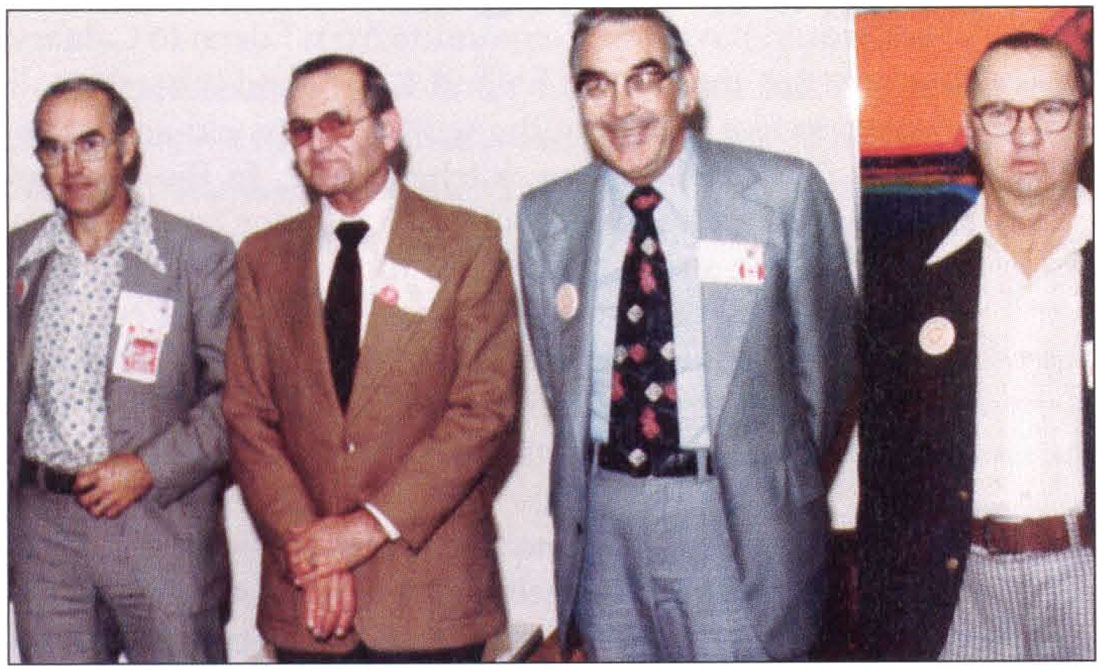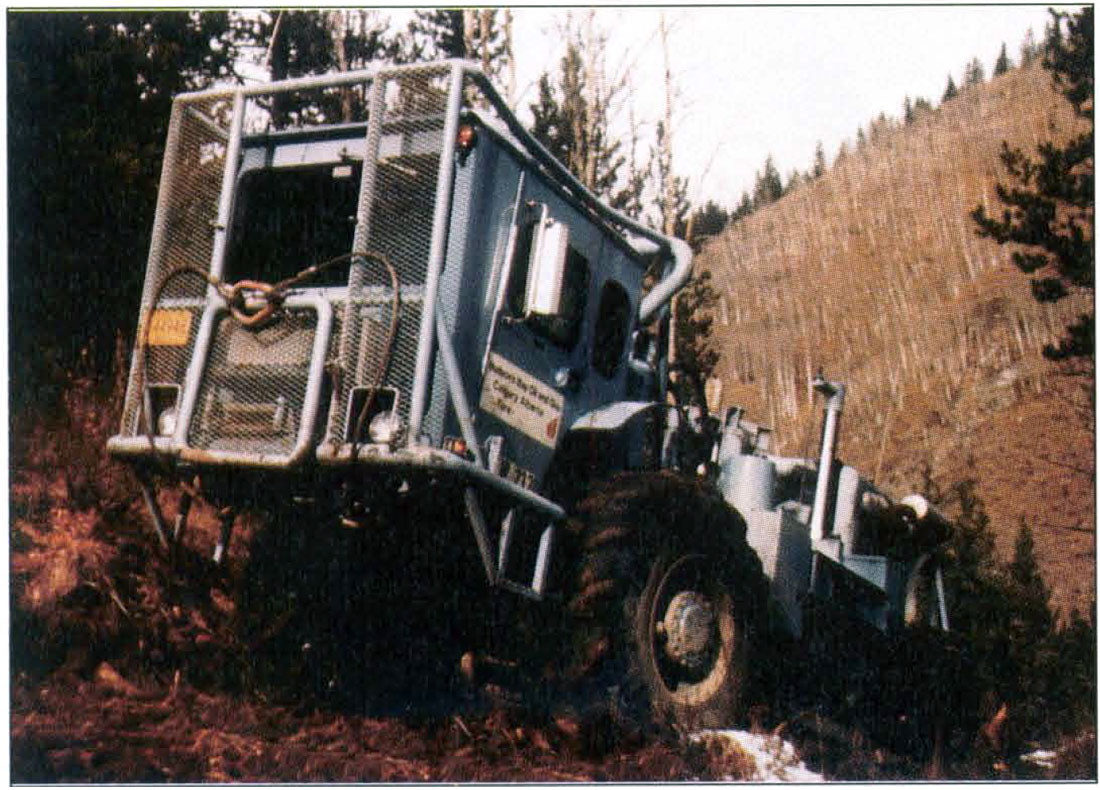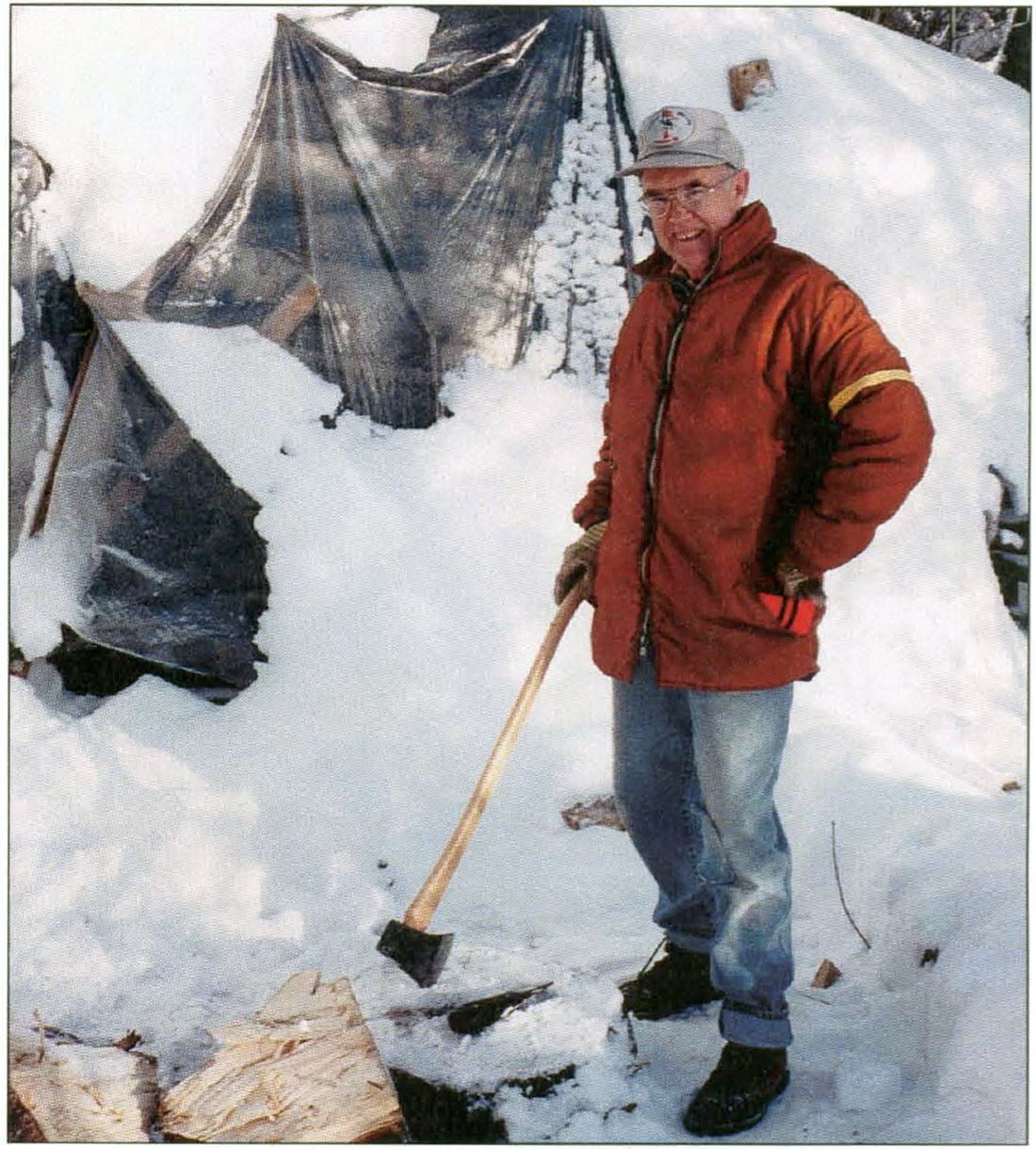Exploring the Possibilities for 50 Years
You don't stay on the cutting edge of petroleum exploration for almost 50 years by resisting change. The secret to Jack Pullen's success has been to look forward and never backward.
His career began in what can be termed the horse and buggy era of the oil and gas industry and spans the explosion of technological advancements that have changed the face of the way people search for resources buried deep beneath the earth's surface.
After half a century in the profession, Jack Pullen still takes joy in the anticipation of the next exciting new development, just around the corner.
As a farm boy in southern Ontario, he worked hard and dreamed big. High school was a five-mile bicycle ride away in Woodstock. His summers were spent toiling on the family farm. In fact, he remembers driving a tractor in the fields on V.E. Day.
University came next and Jack's dream to become a geologist took shape. He enrolled in geology at the University of Western Ontario and, in the summers after second, third and fourth years, he found work on geological field parties. These character building assignments took him to frontier locations in Newfoundland, Labrador, Sudbury, Armstrong and Waboden where the living conditions were primitive and the black flies were hungry.
Jack graduated from Western in 1950 and in the fall of that year he boarded a train heading west. His goal was to find work in the oil fields and he did. Serendipity was on his side, if not geography.
While hitch hiking from Calgary to Edmonton, Jack was picked up by a service station owner who specialized in servicing seismic crews. He said he knew of some crews up in Edson looking for people like Jack. So Jack said, "Fine, I'm going to Edmonton." The service station owner shook his head and set the naive easterner straight. Eventually Jack found his way to Edson and began working as a "computer" for the Geotechnical Foreign Corporation – one of the early seismic contractors that merged with others to form National Geophysical. The observer on this crew was Bud St. Clair, now retired in Calgary. Bob Treacy, retired in Bragg Creek, was the Party Chief of another Geotech crew.
In the winters, the crew worked in the Peace River area. In the summers, they moved south. It was while they were operating in Millet, just south of Edmonton, that Jack met his bride-to-be, Kay Kirby. After a whirlwind courtship, they were married and set up their first home in a basement suite in Wetaskiwin.
The following year, Jack accepted a job with the Tidewater Oil Company in Regina. Jack, Kay and their infant son moved to the prairie capital where their living accommodation for the first six months was a trailer parked in a back yard.
Regina was Jack's first exposure to the oil part of the oil business, as Tidewater and others were finding new fields in Wapella, Rapdan, Dollard and Instow, It was in 1952 that the late Bob Boulware, then a National Geophysical Party Chief, (this was when the interpretation was done on the field crew) noted that a stronger reflection was associated with the presence of the productive J-1-B sand. This was a very early application of "Bright Spot" technology.
After three years in Regina, Jack, Kay and their growing family (now two girls and a boy) moved to the hub of the oil business, Calgary. They built a home in Capitol Hill, across the Banff Highway (now Crowchild Trail) from a large open area where the University of Calgary now stands.
Hudson's Bay Oil and Gas Company (HBOG) was Jack's new employer. It was owned by "The Bay" (25 per cent) and Continental Oil Company (75 per cent). At the time, Continental was a leader in geophysical research and was in the process of inventing the Vibroseis System.
Jack's first assignment with HBOG took him back to Edson (which he now no longer mistook for Edmonton). He worked in the Windfall area with a team looking after seismic crews shooting the original seismic which found the Windfall, Pine Creek, etc. reefs in that vicinity.
Since Jack would have had to commute from Edson to Calgary on weekends to see the family, he and Kay found a very small house in Edson to live in during the winter. It was old and poorly insulated, with an oil-burning kitchen stove. In the extreme cold of the winter, the oil would congeal in the pipe coming from the tank outside. Jack and Kay kept a kettle on the stove so they could pour hot water over the pipe and get the fuel running again. All this with children aged 1,3 and 5 made for a challenging winter to say the least. Back in Calgary the following spring, the family expanded again with the birth of another son.
HBOG, like a few other oil companies, formed its own seismic crew in 1959. Led initially by Earl (Griff) Griffin, its first instruments (20 trace tube-type amplifiers) came from Conoco and the source was dynamite. Shortly after the announcement of the invention of the VIBROSEIS method, the crew converted to vibrators, and proceeded to pioneer Conoco's applied research in this new technology. Jack served as Party Chief during the winter of 1958-59 when the crew was in Grande Prairie, Edson, Fort MacLeod, Cessford and Olds. With four small children, Kay stayed home in Calgary, making for another difficult winter.

In the 60s, Jack continued to work in interpretation in various areas of the Western Canada Basin – for a time in the Medicine River-Olds area (where an extension of the Lonepine Creek field was found) and later in Saskatchewan (where in 1966 the Hummingbird and South Hummingbird discoveries were made). Jack treasures rock chips and oil samples of the Nisku and Leduc from Lonepine Creek.
Throughout his career, Jack has been very active, both academically and within his professional societies. He earned his Certificate in Management Development from the University of Calgary in 1968 and then completed a course of study at the Banff School of Advanced Management in 1970. Jack was "grand fathered" by the APEGGA and received his P.Geoph. certification after initially qualifying as a P.Geol. He has been a member of both the SEG and CSEG continuously since 1952.
In the 70s Jack played an active, high profile role in the CSEG. He chaired the CSEG Family Barbeque in 1970 which drew 1,200 people to a massive party at the Happy Valley in Bowness. Jack also worked the CSEG's Doodlebug Golf Tournament Committee for five years, chairing it in 1972. He describes it as "the most fun" of all the volunteer activities in which he participated.

Jack Setters can take credit for introducing Jack Pullen to golf. He gave his colleague instruction on the game during a field assignment in 1958-59, and encouraged Jack to attend his first Doodlebug in 1960, Kay also got bitten by the Bug, and has attended almost all the tournaments with Jack since 1961. Jack is one of the recipients of the Ted Rosza Award for those who have attended 25 or more Doodlebugs. Sadly, though, he has won only 3 ceramics (flight winner prizes) over the years.
On the serious side of his CSEG activities, Jack served on a Government Relations Committee formed in response to the National Energy Program's assault on the oil industry in 1970. He was involved in various initiatives with the most significant being the design of a Geophysical Incentives Program for the Province of Alberta. Jack's design was accepted by the Government of Alberta almost without modification, and resulted in thousands of miles of high quality seismic data being recorded in Alberta and made available to the industry at lowered costs.

Jack also participated in many CSEG and SEG conventions. He was Technical Co-Chair of the first CSPG-CSEG convention. In 1977, he served as Arrangements Chair for the SEG convention, also held in Calgary.
Jack was elected President of the CSEG in 1975 – a position that reopened his geological windows for him on other geoscientific societies in Canada. In 1980 he received the CSEG Meritorious Service Award for a variety of contributions. An important one was his organization of a course "Geology for Geophysicists" for working geophysicists, lead by several U of C professors.
Other highlights of Jack's rich and varied career were the summer he sent HBOG's Vibroseis crew to Prince Edward Island and another time when the same crew dealt with the technical challenge of trying to get seismic data through the surface basalts in the B.C.'s Bowser/Chilcotin basin. In 1978 he also played a key role in bringing Conoco's shear wave vibrators into Canada to record an experimental shear wave program. 13 companies recorded shear wave and P wave data over approximately 10 sites of known Canadian geology.
Throughout the waves of change in the petroleum industry, Jack has adapted and evolved. In the late 70s and 80s, he moved from technical work into management at HBOG. When Dome took over HBOG in 1981, he stayed on for a brief time before accepting an offer from Suncor. He worked there until 1987, first in exploration management and then as Vice President of Exploration.
In 1988, Jack returned to his geophysical roots as a consulting geophysicist. He continues in that role today, reveling in all the changes and advancements in the field of exploration. "The new technologies made available by my principal client, Talisman Energy lnc., makes the search for oil and gas even more powerful and exciting then ever before," says Jack.
When Kay and Jack pause to take stock of their half-century life in the geophysical business, they think of the young people they have had the opportunity to mentor. "As Manager of Geophysics at HBOG, I made many trips to universities in Canada and abroad to hire geophysicists for the company," says Jack. "Kay and I continue to delight in the brilliance and enthusiasm of the people we met this way."
"It has been a joy watching them become fine people and great geophysicists. I still think fondly and proudly of these men and women as 'my guys'."
Through these special recruits and through his own commitment to remain at the forefront of a rapidly evolving profession, Jack Pullen is keeping his focus on the future.












Share This Column